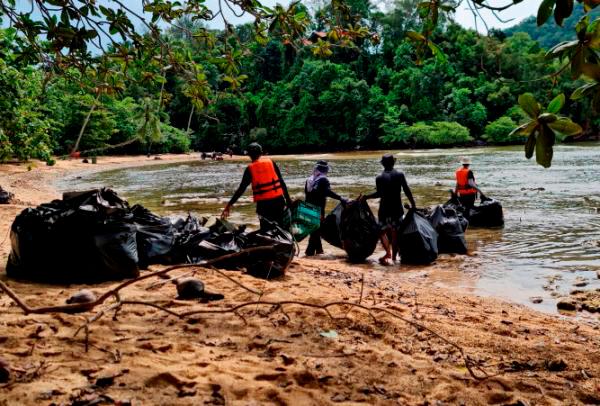THE Blue Economy has emerged as a prominent concept in sustainable development discussions, especially in Malaysia, where the marine environment plays a crucial economic role.
However, the effectiveness of this approach and its practical implementation in Malaysia are subjects of scrutiny, highlighting the challenges and gaps in governance and policy frameworks.
Before the term “Blue Economy” was popularised, the world’s oceans were already facing severe degradation. Overfishing, pollution and habitat destruction had impacted marine ecosystems.
According to the United Nations, around 90% of global fish stocks are either fully exploited or overexploited, a trend mirrored in Malaysia.
The country generates over one million tonnes of plastic waste annually, much of which ends up in the ocean. The Ellen MacArthur Foundation warns that by 2050, the ocean could contain more plastic than fish by weight if current practices continue.
Additionally, coral reefs, which support a quarter of marine species, have suffered significant loss, with approximately 14% of global coral reefs disappearing between 2009 and 2018 due to rising sea temperatures and pollution.
The Blue Economy aims to balance economic growth with environmental sustainability by focusing on industries such as sustainable fishing, aquaculture, renewable marine energy and marine tourism.
The Food and Agriculture Organisation highlights the potential of sustainable aquaculture to meet seafood demand while easing pressure on wild fish stocks.
Marine renewable energy, such as offshore wind and tidal power, presents opportunities to reduce carbon emissions. However, without careful management, the expansion of these industries could exacerbate environmental problems, leading to increased pollution, habitat destruction and excessive resource exploration for economic benefit.
In Malaysia, the possible governance to shape the Blue Economy can be found in several existing laws, policies and action plans such as the Fisheries Act 1985 (Act 317), Environmental Quality Act 1974 (Act 127), Maritime Enforcement Agency Act 2004 (Act 633), Exclusive Economic Zone Act 1984 (Act 311), Continental Shelf Act 1966 (Act 83), Merchant Shipping Ordinance 1952, National Coastal Zone Physical Plan 2012, National Policy on Biological Diversity 2016-2025 and National Action Plan for Marine Litter (2021-2030).
However, this governance faces several gaps such as enforcement challenges with inconsistent application of laws, which hinder effective management of marine resources.
Coordination issues also arise from overlapping jurisdictions among agencies such as the Department of Fisheries and the Malaysian Maritime Enforcement Agency, leading to confusion and inefficiencies in policy implementation.
Moreover, the fragmented implementation of existing policies, including the National Action Plan for Marine Litter and the National Coastal Zone Physical Plan, further exacerbates these challenges, underscoring the need for more integrated and effective approaches.
The absence of a comprehensive Blue Economy policy framework results in fragmented approaches across sectors, making it difficult to coordinate efforts and attract investment. Lastly, the limited resources and capacity affect the enforcement and management of Marine Protected Areas (MPAs).
For example, MPAs cover only about 5.56% of Malaysia’s marine territory, falling short of the 10% target set (by 2025) by the Convention on Biological Diversity.
Furthermore, existing laws are often ill-equipped to address emerging challenges like deep-sea mining, marine plastic pollution and climate change impacts.
Other challenges include overfishing, and illegal, unreported and unregulated (IUU) fishing. The World Wildlife Fund estimates that IUU fishing costs Southeast Asia, including Malaysia, between US$6 and US$10 billion (RM26.27 and RM43.62 billion) annually.
Marine pollution from coastal development and land-based activities impacts marine ecosystems, with over 70% of Malaysia’s rivers reported as polluted, contributing to the contamination of coastal waters.
Climate change further exacerbates the situation, with the Intergovernmental Panel on Climate Change projecting a sea level rise of 0.5 to one metre by 2100, which poses severe risks to Malaysia’s coastal areas and marine industries.
To address these challenges, Malaysia should consider several policy recommendations. Developing a comprehensive Blue Economy policy framework that integrates all aspects of marine resource management is essential. This policy should align with international best practices and the United Nations Sustainable Development Goals (SDGs), particularly SDG 14 (Life Below Water).
Strengthening inter-agency coordination by establishing a central oversight body can help streamline efforts and improve collaboration. Expanding and strengthening MPAs to meet the 10% target and ensuring effective management and enforcement are crucial.
The most vital suggestion is to strengthen current legislation and incorporate additional regulations to tackle developing difficulties.
In conclusion, while the Blue Economy is a promising approach to sustainable development, Malaysia must address all challenges to ensure its success.
By developing a comprehensive policy framework, improving coordination and enhancing enforcement, Malaysia can leverage the Blue Economy.
Dr Nur Zulaikha Yusof is a senior researcher at the Centre for Coastal and Marine Environment, Maritime Institute of Malaysia, and Dr Izyan Munirah Mohd Zaideen is a senior lecturer at the Faculty of Maritime Studies, Universiti Malaysia Terengganu. Comments: letters@thesundaily.com









